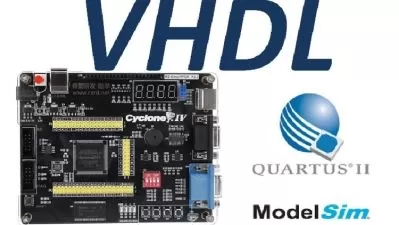Getting Started with FPGA Programming with VHDL
Dmitri Nesteruk
3:08:06
Description
Field Programmable Gate Arrays are a technology that sits between general-purpose microprocessors and fixed-structure Application Specific Integrated Circuits, and you can build almost anything with them. This course will teach you how.
What You'll Learn?
Field Programmable Gate Array (FPGA)s provide both the ability to effectively design your own processor to perform a specific task yet, at the same time, allow for later reprogramming the processor in the field. FPGAs are used across many industries, from home automation to financial engineering, aerospace and many others. While this all sounds deadly serious, it's important to understand that working with FPGAs can also be quite fun. You can think of them as the world's fastest set of Lego blocks. What you can build with an FPGA is mostly limited only by your imagination. In this course, Getting Started with FPGA Programming with VHDL, you'll first learn an overview of FPGA architecture. Next, you'll learn the fundamentals of VHDL programming language. Finally, you'll wrap up the course by learning about debugging and analysis. You'll look at how to create configurations, define signals and triggers to monitor, configure signals, and recompile to embed the logic analyzer in the design. By the end of this course, you'll have a strong foundation of FPGA programming with the VHDL language to use in your own work.
More details
User Reviews
Rating
Dmitri Nesteruk
Instructor's Courses
Pluralsight
View courses Pluralsight- language english
- Training sessions 54
- duration 3:08:06
- level preliminary
- Release Date 2023/10/11













